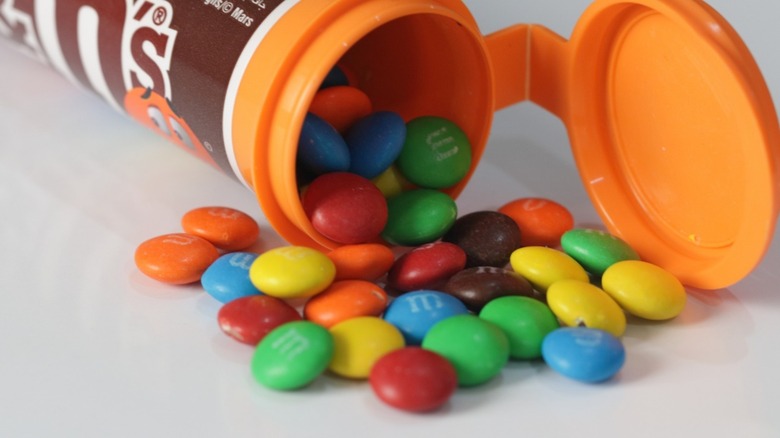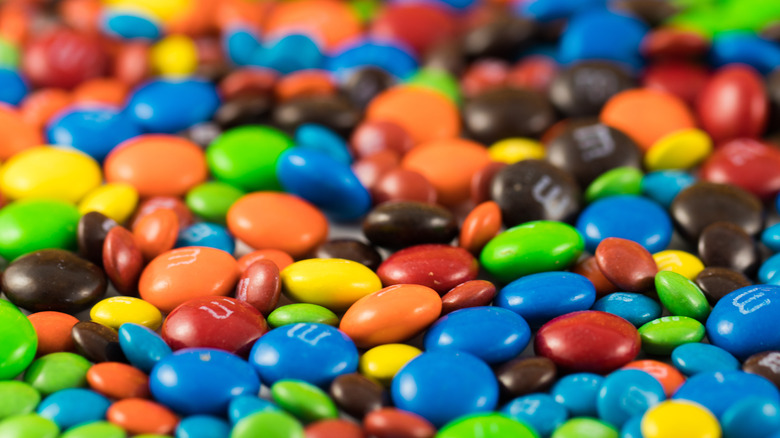The Real Reason Mini M&M's May Taste Better Than The Original
Branded as the chocolate that "melts in your mouth, not in your hand" and encased in a colorful candy shell, M&M's are the king of portable, melt-free chocolate candies. Perfect for snacking on discreetly while in class or a meeting, baking into cookies, or just enjoying by the handful, it's no wonder M&M's are among America's most popular candies. They even beat out Reese's for the most popular Halloween candy in 2021 (via a survey by Retail Me Not).
M&M's still come in that iconic milk chocolate flavor, but they've also expanded into new, bold flavors and styles. There are peanut butter M&M's, mint chocolate M&M's, orange cream M&M's, even sugar cookie-flavored and brownie M&M's (via M&M's)! But to some, the most delicious type of M&M isn't a new flavor at all. In fact, it's actually something way smaller.
Released in 1996 (via Snack History), M&M's minis are basically the already-small chocolate candies, except shrunk down even smaller and stored in plastic tubes instead of the paper pouches. Despite these few cosmetic differences being the only thing separating minis and regular M&M's, many people — according to a poll by the National Science Foundation Center for Sustainable Nanotechnology blog — believe that minis taste sweeter than the originals. How can it be that a smaller version is somehow sweeter than its regular-sized counterpart? Could it be the novelty of mini M&M's tricking people into thinking they taste better? Or does the size of a candy really impact its taste?
M&M's minis have a higher candy-to-chocolate ratio
According to the Sustainable Nano blog, the reason for M&M's minis tasting sweeter than regular M&M's isn't due to any change in the recipe or a trick of the tongue, but instead a change in the candy's surface properties. By calculating the surface area-to-volume ratio of both a regular M&M and an M&M mini, Sustainable Nano discovered that a regular M&M has a surface area-to-volume ratio of 7.8 while an M&M mini has a ratio of 11.1. This means there's more candy shell on an M&M mini than there is on a regular M&M, so that extra sweetness comes from tasting it more.
Can this logic be applied to other foods? In a world of cupcakes, mini hot dogs, and bite-sized candy bars, could it be that smaller is the way to go to create more flavor? This may actually hold some water, albeit in a more psychological way. According to a 2015 study in the journal of Psychology & Marketing, consumers with smaller portions are more willing to savor each bite and take longer to note the flavors more thoughtfully than those with larger portions. Perhaps when eating M&M's minis, people are more likely to take the time to eat them, and thus notice the sweeter taste.
But big or small, there's nothing like a palmful of M&Ms, isn't there?

